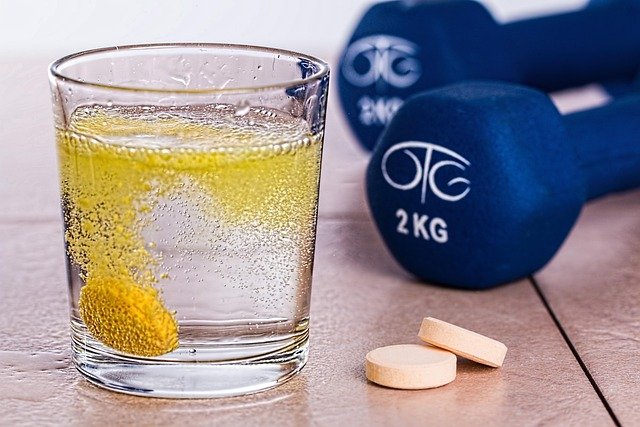Hydration and Electrolyte Habits to Support Daily Function
Good hydration habits support concentration, digestion, movement and metabolic balance across a typical day. Small, consistent choices—water between meals, mindful electrolyte intake around exertion, and pairing fluids with balanced meals—help maintain steady energy and digestion without overcomplicating routines.

Maintaining steady hydration and a balanced electrolyte profile supports many aspects of everyday function: mental clarity, digestion, physical performance and appetite regulation. Drinking regularly, recognizing signs of mild dehydration and pairing fluids with meals that provide macronutrients and micronutrients can stabilize energy balance and satiety across the day. Simple strategies—consistent water access, modest electrolyte replacement during long activity, and attention to food variety—make hydration manageable alongside mealplanning and mealprep routines.
This article is for informational purposes only and should not be considered medical advice. Please consult a qualified healthcare professional for personalized guidance and treatment.
How do hydration and macronutrients interact?
Hydration status affects how the body processes macronutrients like protein, carbohydrates and fats. Water is required for digestion, nutrient transport and metabolic reactions that release energy from food. When planning meals, include adequate protein and a balance of carbohydrates and fats to support energy balance; this also influences fluid needs because higher-protein or high-fiber meals can demand more water for digestion. Practical mealprep that pairs water intake with balanced plates can reduce post-meal sluggishness and support steady energy throughout the day.
What role do electrolytes and micronutrients play in digestion and guthealth?
Electrolytes—sodium, potassium, magnesium and calcium—help regulate nerve signaling, muscle function and fluid balance, all of which influence digestion and guthealth. Micronutrients such as zinc and B vitamins support enzyme systems and intestinal lining maintenance. For most people, a varied diet supplies necessary micronutrients; in specific contexts (extended sweating, gastrointestinal losses), targeted electrolyte replacement helps restore balance. Emphasizing foodvariety—fruits, vegetables, legumes and whole grains—supports micronutrient intake alongside adequate hydration for optimal digestion.
How can mealplanning and nutrienttiming support hydration habits?
Intentional mealplanning and nutrienttiming make it easier to coordinate fluid intake with digestion and activity. For example, sipping water before meals can aid satiety and digestion; avoid large volumes immediately before or during heavy exertion to prevent discomfort. Timing carbohydrates and protein around workouts helps with recovery and may guide electrolyte needs post-exercise. Mealprep that includes portable water bottles and electrolyte-rich snack options (fruits, yogurt, nuts) reduces the chance of relying on sugary drinks that offer little micronutrient benefit.
How do protein and plantbased choices affect satiety and energybalance?
Protein contributes strongly to satiety and helps preserve lean mass, which supports resting energy needs. Plantbased proteins—such as legumes, tofu and whole grains—also provide fiber and micronutrients that influence guthealth and digestion. Combining plant and animal proteins, if acceptable, increases amino acid completeness and may improve satiety. Adequate hydration helps fiber move smoothly through the digestive tract; drinking with fiber-rich, plantbased meals reduces bloating risk and supports more consistent satiety signals throughout the day.
How can labelreading and portioncontrol improve everyday hydration and nutrient intake?
Labelreading helps identify sodium and added-sugar content, both relevant to electrolyte balance and hydration. Highly processed or sodium-heavy foods can increase thirst and shift fluid requirements; conversely, very low-sodium restrictive diets may require mindful electrolyte planning under professional guidance. Practicing portioncontrol supports energybalance and prevents overconsumption that can affect comfort and digestion. Mealprep that measures portions and selects lower-sodium, minimally processed ingredients makes it easier to match fluid intake to actual dietary composition.
What practical habits support digestion, satiety and steady fluids?
Adopt simple routines: carry a reusable water bottle, sip regularly rather than waiting until thirsty, and include drinks that contain small amounts of electrolytes during prolonged activity. Include foodvariety in snacks and meals to cover micronutrient needs, and schedule short rehydration breaks around workouts and long meetings. Monitor urine color as a general hydration cue and notice changes in appetite or digestion that may indicate fluid or electrolyte shifts. These habits link digestion, satiety and energybalance without complex tracking.
In summary, modest, consistent hydration paired with a varied diet supports digestion, cognition and physical function across daily life. Attention to macronutrients and micronutrients, purposeful mealplanning and basic labelreading can help maintain electrolyte balance and satiety. Small, practical adjustments—timing fluids around activity, emphasizing plantbased options for fiber and micronutrients, and practicing portioncontrol—make hydration and nutrient strategies sustainable for everyday routines.





